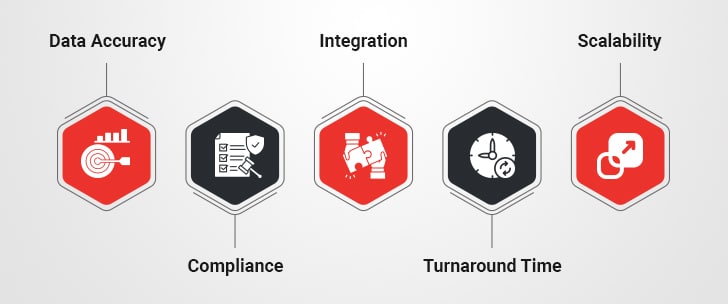Imagine kicking off a marketing campaign with a great strategy only to be met with disappointing results. What went wrong? Your database could be very old, inaccurate or simply incomplete. This is a common problem faced by most B2B companies. Without good, trustworthy data, your marketing emails are hardly opened, leads never convert, and sales opportunities slip away. So, what’s to blame? Data gaps.

This is where data append services come in—often overlooked but incredibly valuable for modern B2B marketing and sales. These services help boost your database by filling in the gaps with missing or refreshed information. The outcome? Sharper customer insights, improved segmentation, and campaigns that truly resonate. Let’s explore how data appending services can revitalize your database and ultimately enhance your business results.
The Problem with Incomplete Databases
More than just an annoyance, incomplete databases are a major barrier to the success of your business. Your ability to successfully interact with clients is jeopardized when important information is either missing or out of date. Let’s take a closer look at the problems.
1. The Domino Effect of Bad Data
Let’s say your contact database has outdated entries and you are conducting a campaign with a 30% email bounce rate. This harms not just your sender reputation but also your campaign engagement metrics. Similar problems are encountered by sales teams, who waste hours on calls that result in nothing because of inaccurate phone numbers or out-of-date job titles Over time, the problem worsens, lowering team morale and confidence in your data.
2. The Impact of Inaccurate Data on Revenue
According to Gartner, companies lose an average of $12.9 million a year due to poor quality of business data. Bounced emails aren’t the challenge here–mismatched targeting, missed opportunities, and campaigns that don’t reach the correct audience are other limiting factors. The risks are much higher in business-to-business transactions, where high-value accounts are common. Losing a six-figure contract could result from failing to get the contact details of a decision-maker.
3. Data Decay is Inevitable
Data deteriorates with time; it is never static. Industries evolve, businesses shift, and job positions alter. Some studies estimate that every year, up to 30% of B2B data becomes obsolete. Even a well-designed database might become unreliable without frequent updates, resulting in lost marketing budgets and a diminishing return on investment. Data append services are essential in this situation.
What Are Data Append Services?
Data append services help fill the missing pieces in your database. They enrich your existing data with updated or additional information from reliable sources. Let’s understand how this works:
1. Examine your current data
Look for shortcomings in your database with respect to contact details, demographic information, firmographics, or behavioral data.
2. Match with external data sources
Use third-party data processing vendors or proprietary databases to add missing details.
3. Enrich and validate
Ensure the additional data included is accurate and compliant with privacy regulations like GDPR or CCPA.
This process enhances an outdated database into a repository of accurate, actionable information.
How Data Appending Boosts Customer Insights
Accurate and enhanced dataset isn’t just helpful—it’s vastly productive for business insight generation. By using data appending services, businesses can unlock a mine of actionable insights. Here’s how:
1. Transforming Raw Data into Intelligence
Data appending converts a basic contact list into a rich profile of customer personas. For example, adding data about a firm such as company size, industry, and revenue helps your sales team understand the unique challenges faced by each prospect. Behavioral insights, like purchase history or website interactions, empower marketing teams to design campaigns that resonate.
2. Creating Unified Customer Profiles
Fragmented data across multiple systems leads to missed opportunities. By consolidating and enriching this data, businesses can create unified profiles. For example, if you know that a certain online visitor has downloaded an eBook last week and attended your webinar yesterday, this information will allow you to position your next marketing campaign more precisely.
3. Enabling Data-Driven Decision Making
Appended data gives businesses the confidence to make informed decisions. Whether it’s prioritizing high value leads or identifying trends among existing customers, enriched databases ensure your strategies are backed by solid insights.
4. Real-World Scenario: Enriching Customer Profiles
Let’s say a SaaS company is targeting CFOs. Their existing database might only have names and email addresses. With data appending, they add job titles, company revenue, and recent activity on their website. Suddenly, their sales team can prioritize CFOs at large enterprises with high engagement, leading to faster deal closures.
Upgrade your data, upgrade your results
Achieving Hyper-Personalization Through Data Appending
Today, hyper-personalization has become a non-negotiable element of B2B marketing success. Customers don’t just like to be remembered by their names, they also expect businesses to know about their needs and offer solutions that solve those problems. Here’s how b2b data append services power hyper-personalization:
1. Value of Tailored Recommendations for B2C and B2B
In the B2C scenario, companies like Amazon, Netflix, and Spotify have set very high standards for personalized recommendations:
- Amazon recommends products based on customer’s browsing and purchase history, aiming for repeat purchases.
- Netflix suggests programs based on user’s viewing behavior, for increased user retention.
- Spotify offers music playlists based on listening habits, creating a unique user experience.
These strategies translate seamlessly into B2B:
- A CRM tool recommends features based on a lead’s previous product interactions.
- Marketing campaigns dynamically adjust based on online visitor’s engagement, such as webinar attendance or whitepaper downloads.
2. Account-Based Marketing (ABM)
The ultimate success of ABM campaigns depends heavily on detailed customer data to create campaigns tailor-made to specific customer accounts. For example:
- If appended data reveals a prospect is an enterprise with a global presence, your campaign might highlight your company’s scalability and multinational support.
- If a mid-sized company is transitioning to the cloud, you can showcase case studies relevant to their industry and challenges.
3. Real-Time Personalization in Action
- B2B Sales Recommendations: Sales representatives use appended data to craft pitches tailored to a lead’s stage in the buying journey, improving conversion rates.
- Marketing Campaign Adjustments: Based on engagement metrics, a campaign might shift its focus to emphasize different value propositions or pain points.
These use cases demonstrate how data appending turns generic campaigns into high-impact, personalized experiences.
Benefits of Data Appending for Marketing and Sales
The benefits of data append services extend beyond better insights. They directly impact your marketing and sales outcomes:
1. Higher Engagement Rates
Higher open and click-through rates result from enriched data, which ensures that your emails are received by the appropriate person at the appropriate time.
2. Better Lead Qualification
Sales teams can spend less time on unqualified prospects by concentrating on leads that fit your target client profile.
3. Improved ROI
When your campaigns are accurate and targeted, every dollar spent delivers better returns. Wasted marketing budgets become a thing of the past.
4. Cost Savings
Fixing a bad database can be expensive. Regular data appending prevents issues from snowballing, saving money in the long run.
Before and After: Data Appending in Action
To realize the impact of data appending, let’s examine a hypothetical situation:
Prior to Data Appending:
Low webinar attendance and high email bounce rates are problems for a B2B SaaS provider. Their database lacks key details like updated job titles and behavioral insights.
After Data Appending:
Using data append services, the company enriches its database. They now have accurate contact details, firmographic data, and insights into customer preferences. Email bounce rates drop, webinar attendance triples, and sales teams close deals faster.
This “before and after” comparison shows how a small investment in data appending can yield significant returns.
Key Considerations When Choosing Data Append Services
Not every provider of data appending services offers the same level of services Consider the following to maximize your investment:

1. Data Accuracy
Ensure the provider uses reliable sources and performs thorough validation. Inaccurate information can cause more harm than benefit.
2. Compliance
Verify that GDPR, CCPA, and other data privacy regulations are being followed.
3. Integration
The appended data should seamlessly integrate with your CRM or marketing automation tools.
4. Turnaround Time
In businesses that move quickly, timely updates are essential.
5. Scalability
Select a vendor who can accommodate the size of your expanding database and grow with your company.
The Future of Data Appending in B2B Marketing
Thanks to technological improvements and growing attention to data protection, data appending has a bright future. Let’s explore what lies ahead:
1. AI-Powered Data Appending Tools
Artificial intelligence is revolutionizing data enrichment. Here are some notable tools:
- Clearbit offers real-time AI enrichment of customer data giving insights such as job titles, company size, and revenue.
- ZoomInfo uses AI to offer advanced data matching and enrichment for B2B sales and marketing.
- InsideView combines AI with real-time updates to provide firmographic and behavioral data.
2. Regulations Shaping the Industry
Data privacy regulations are impacting how companies gather and enrich data:
- The General Data Protection Regulation or GDPR regulates the processing and storage of personal data is in the European Union.
- The California Consumer Privacy Act or CCPA safeguards consumer rights by placing a strong emphasis on consent and transparency.
- Future Trends: Expect stricter global regulations, emphasizing anonymized and permission-based data enrichment.
3. Use of Predictive Analytics
The next frontier lies in combining predictive analytics with enriched?data. Companies will be able to foresee future needs in addition to knowing what their customers need now, which will encourage proactive engagement.
4. Real-Time Updates for Dynamic Databases
As industries move faster, real-time data appending will become essential. This ensures that sales and marketing teams always have the most current and accurate information at their fingertips.
Summing Up
Data gaps are a real barrier to your company’s growth, not just a small annoyance. You may turn your obsolete database into an effective tool for consumer insights, hyper-personalization, and improved marketing and sales outcomes by utilizing reliable data append services.
Evaluate your database today. The gaps are costing you opportunities, but with the right data appending partner, those gaps can become bridges to success.





